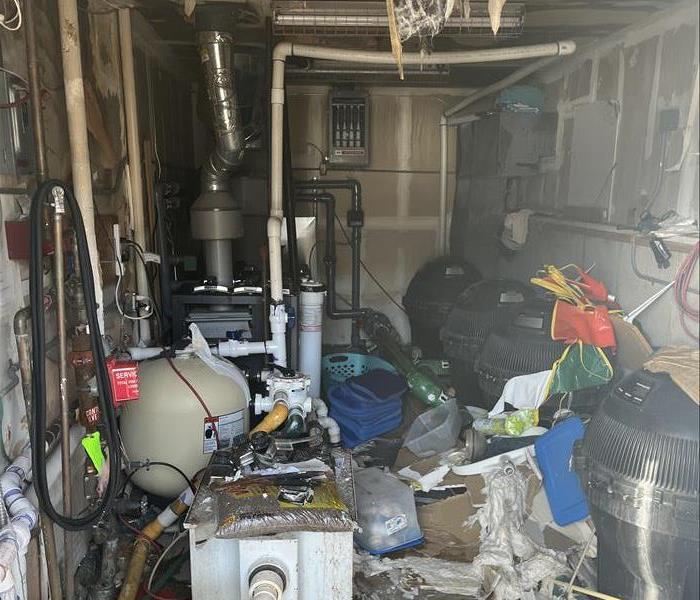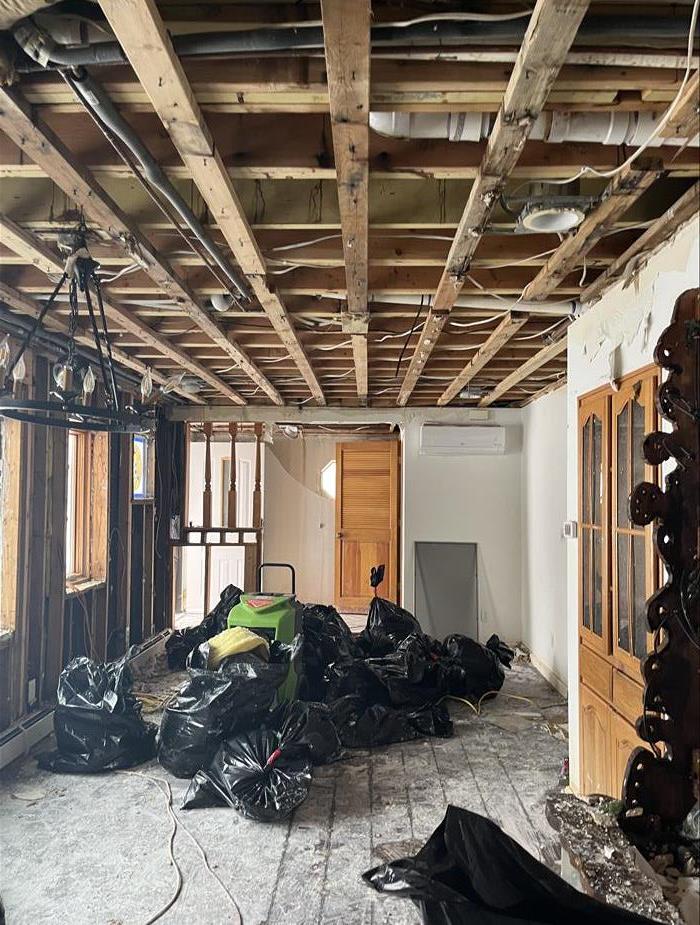Recent Posts
The Crucial Role of Deep Cleaning After Fire Damage
3/12/2025 (Permalink)
 Beyond the immediate destruction caused by flames, residual elements like soot, smoke, and debris can cause significant damage to your property.
Beyond the immediate destruction caused by flames, residual elements like soot, smoke, and debris can cause significant damage to your property.
Experiencing a fire in your home is undoubtedly distressing. Beyond the immediate destruction caused by flames, residual elements like soot, smoke, and debris can cause significant damage to your property. Deep cleaning is essential to restore your home to its pre-fire condition and prevent further deterioration.
Understanding the Aftermath of Fire Damage
Fires leave behind more than just charred structures. Soot and smoke residues permeate various surfaces, leading to discoloration, corrosion, and persistent odors. According to the U.S. Fire Administration, cooking is the leading cause of home fires, accounting for 47.7 percent of incidents. This statistic underscores the prevalence of fire damage in residential settings and the importance of thorough post-fire remediation.
Why Deep Cleaning Is Essential
- Prevents Further Damage
Soot is acidic and can corrode metals, discolor walls, and damage other materials if not promptly removed. Deep cleaning eliminates these residues, preventing ongoing deterioration. - Eliminates Lingering Odors
Smoke odors can persist long after the fire is extinguished, seeping into fabrics, carpets, and walls. Comprehensive cleaning and deodorization are necessary to remove these unpleasant smells. - Restores Aesthetic Appeal
Deep cleaning addresses visible soot stains and discoloration, helping to restore your home's appearance to its pre-fire state.
SERVPRO®'s Comprehensive Cleaning Process
At SERVPRO, we employ a meticulous approach to fire damage restoration:
- Assessment: We evaluate the extent of damage to determine the appropriate cleaning methods.
- Debris Removal: Charred debris is safely removed to prepare for cleaning.
- Soot and Smoke Residue Cleaning: Utilizing specialized techniques, we clean affected surfaces to remove soot and smoke particles.
- Deodorization: Advanced equipment is used to neutralize odors, ensuring your home smells fresh.
- Final Inspection: We conduct a thorough review to ensure all areas have been properly cleaned and restored.
Frequently Asked Questions
Q: Can I perform the deep cleaning myself after a fire?
A: It's recommended to hire professionals like SERVPRO for deep cleaning after fire damage. We have the expertise and equipment to handle the complexities involved.
Q: How long does the deep cleaning process take?
A: The duration depends on the extent of the damage. After an initial assessment, we can provide a more accurate timeline.
Q: Will deep cleaning remove all smoke odors?
A: Our comprehensive cleaning and deodorization process is designed to eliminate smoke odors effectively.
Q: Is deep cleaning covered by insurance?
A: Many insurance policies cover fire damage restoration, including deep cleaning. It's best to consult with your insurance provider for specific details.
In conclusion, deep cleaning is a vital step in the fire damage restoration process. It not only addresses visible damage but also prevents further issues, ensuring your home is safe and comfortable once again.
Fire Damage vs. Smoke Damage: Understanding the Restoration Process with SERVPRO®
12/9/2024 (Permalink)
When a fire occurs, the damage it leaves behind can be extensive and multifaceted. Not only does the fire itself destroy structures and belongings, but smoke can also cause widespread damage. Understanding the distinction between fire damage and smoke damage is crucial for a comprehensive restoration process. Each type of damage requires different techniques, tools, and approaches to effectively restore a property. SERVPRO® specializes in both fire and smoke damage restoration, offering expert services to return your home or business to its pre-fire condition.
What Is Fire Damage?
Fire damage refers to the physical destruction caused by flames during a fire. It can range from charred walls and melted materials to completely destroyed structures. Fire consumes materials like wood, plastics, and fabrics, causing irreversible damage that requires significant repairs or replacement.
Key Aspects of Fire Damage Restoration:
- Structural Repair and Reconstruction: When a fire causes severe damage, parts of the structure, such as walls, floors, and roofing, may need to be repaired or entirely rebuilt. This step ensures the structural integrity of the building.
- Debris Removal: After a fire, there is often a large amount of debris left behind. Fire-damaged materials need to be carefully removed and disposed of properly to clear the area for restoration work.
- Damage Assessment: Fire restoration professionals assess the extent of the damage to determine what can be salvaged and what needs to be replaced. Items directly exposed to flames may be irreparably damaged.
- Content Cleaning: Some belongings that have been lightly affected by fire can be cleaned and restored. Items like furniture, clothing, and certain electronics may be recoverable through specialized cleaning processes.
At SERVPRO of Northern Colorado Springs/Tri-Lakes, our fire damage restoration experts are equipped with advanced tools and techniques to tackle even the most extensive fire damage. Whether it's repairing your property or restoring personal belongings, we are dedicated to helping you recover after a fire.
What Is Smoke Damage?
Smoke damage is often less visible than fire damage but can be equally destructive. Smoke can travel through walls, ducts, and ventilation systems, affecting areas that were not directly exposed to the flames. The particles from smoke can settle on surfaces, causing discoloration, odors, and corrosion over time. Smoke damage can be particularly harmful because it is pervasive and can affect almost every surface and material in a building.
Key Aspects of Smoke Damage Restoration:
- Odor Removal: One of the most persistent issues with smoke damage is the smell. Smoke odors can linger in walls, fabrics, carpets, and upholstery. SERVPRO uses specialized deodorization techniques to remove these odors completely.
- Surface Cleaning: Smoke residue, also known as soot, can cause staining and damage to walls, ceilings, and floors. Soot particles can be oily or dry, and removing them requires the right cleaning methods for different surfaces. Incorrect cleaning can cause further damage.
- Air Quality Control: Smoke particles can linger in the air and lead to poor indoor air quality. SERVPRO’s professionals use air scrubbers and advanced filtration systems to remove harmful particles from the air, ensuring a safe and clean environment.
- Content Restoration: Many personal items, such as documents, electronics, and furniture, can be affected by smoke. SERVPRO’s restoration process includes cleaning and deodorizing these items to restore them to pre-fire conditions when possible.
The Key Differences
The main difference between fire damage and smoke damage is the type of restoration required. Fire damage is primarily structural, involving repairs or replacement of burnt materials, while smoke damage focuses more on cleaning and deodorizing. Additionally, fire damage is typically confined to areas directly exposed to flames, while smoke damage can affect larger portions of the property due to its ability to travel.
SERVPRO: Your Trusted Partner in Fire and Smoke Restoration
At SERVPRO, we understand that dealing with the aftermath of a fire can be overwhelming. That’s why we offer both fire and smoke damage restoration services to handle all aspects of the recovery process. From repairing your property to restoring smoke-damaged belongings, SERVPRO has the expertise and tools needed to restore your home or business quickly and efficiently.
We also work closely with insurance providers to streamline the claims process, ensuring that you get the support you need during this challenging time.
Both fire and smoke damage can cause significant disruption, but each requires a different approach for restoration. SERVPRO specializes in handling both types of damage, providing comprehensive services that will restore your property to its pre-fire state. When disaster strikes, trust SERVPRO of Northern Colorado Springs/ Tri-Lakes to help you through the recovery process.
Common Signs of Water Damage in Your Home
10/16/2024 (Permalink)
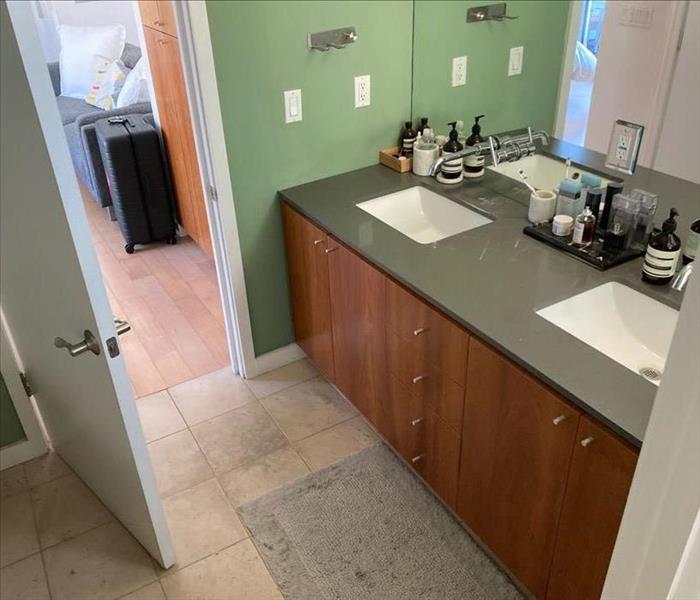 Your home is an investment—protect it by acting quickly when you see the signs of water damage.
Your home is an investment—protect it by acting quickly when you see the signs of water damage.
Water damage is one of the most common and potentially costly issues homeowners face. Identifying the early signs of water damage can save you time, money, and stress. Whether it's due to a leaky roof, burst pipes, or a hidden plumbing issue, water can wreak havoc if left unchecked. In this blog, we'll explore some common signs of water damage in your home that you should never ignore.
Discoloration on Walls and Ceilings
One of the most obvious signs of water damage is discoloration on your walls and ceilings. If you notice brown, yellow, or copper-colored stains, it could indicate a leak from above or within your walls. These stains are often accompanied by a musty odor, a telltale sign of moisture. Over time, these stains can grow larger and darker, indicating that the water damage is spreading. If you see these spots in your home, it's important to investigate the source and address it as soon as possible to prevent further damage.
Warped or Buckling Floors
Water damage doesn’t just affect your walls and ceilings; it can also impact your flooring. If you notice your hardwood or laminate floors starting to warp, buckle, or feel soft underfoot, this could be a sign of water damage. Excess moisture causes the material to swell, leading to an uneven or bumpy surface. In some cases, the flooring may even separate from the subfloor. Ignoring these signs can result in costly repairs or the need for complete floor replacement, so it’s best to take action quickly.
Peeling Paint or Wallpaper
Another common sign of water damage is peeling paint or wallpaper. When moisture gets behind the walls, it can cause the paint to bubble and eventually peel away. Similarly, wallpaper may start to peel or detach from the wall. This is a clear indicator that water is trapped behind the surface, which could lead to more extensive damage if not addressed. If you spot any peeling, don’t just cover it up—investigate the root cause and fix it to prevent further issues.
Mold Growth
While mold growth might seem like an obvious sign of water damage, it’s not always immediately visible. Mold can grow in hidden areas like behind walls, under flooring, or in crawl spaces. If you notice a persistent musty smell, it’s a good idea to inspect your home for mold. Even small amounts of mold can indicate a larger moisture problem that needs to be addressed. Remember, mold thrives in damp, dark environments, so tackling any water issues promptly can help prevent mold from spreading.
Recognizing the signs of water damage in your home is crucial to maintaining a safe and comfortable living environment. By staying vigilant and addressing issues like discoloration, warped floors, peeling paint, and mold growth, you can prevent minor problems from turning into major headaches. If you suspect water damage in your home, don’t hesitate to contact a professional water damage restoration service like SERVPRO® to assess the situation and provide the necessary repairs. Your home is an investment—protect it by acting quickly when you see the signs of water damage.
Kitchen Mold: Prevention Tips and Effective Elimination Strategie
9/30/2024 (Permalink)
Your kitchen is one of the most frequently used spaces in your home, and it’s also a prime target for mold growth. If left unchecked, mold can spread quickly, damaging surfaces and creating an unpleasant environment.
The good news is that with proper prevention and elimination techniques, you can keep your kitchen mold-free. Let’s explore how you can prevent mold from taking over your kitchen and the steps to eliminate it if it’s already present.
Why Mold Grows in Kitchens
Mold needs three things to grow: moisture, warmth, and a food source. Kitchens often provide all three:
- Moisture: Steam from cooking, water from dishwashing, and spills or leaks create a damp environment.
- Warmth: Kitchens are often warm due to cooking and the use of appliances like stoves and dishwashers.
- Food Sources: Organic material like food scraps, grease, and dirt are ideal for mold growth.
Understanding these factors can help you take proactive steps to prevent mold from settling in.
How to Prevent Mold in Your Kitchen
Control Moisture
Since moisture is the key ingredient for mold growth, managing it is your first line of defense. Here’s how you can do that:
- Fix leaks immediately: Whether it’s a leaky faucet, a dripping pipe under the sink, or water seeping from the dishwasher, address any leaks as soon as they appear.
- Use a dehumidifier: If your kitchen tends to be humid, consider using a dehumidifier to reduce moisture in the air.
- Wipe up spills quickly: Don’t let water or other liquids sit on countertops or floors for long periods. Clean up spills immediately to prevent moisture buildup.
- Run your exhaust fan: Every time you cook or run hot water, turn on the kitchen exhaust fan to reduce humidity levels.
Clean Regularly
A clean kitchen is less likely to harbor mold. Here are a few cleaning tips to keep mold at bay:
- Wipe down surfaces: Regularly clean countertops, sinks, and backsplashes with warm, soapy water or a kitchen-safe cleaning solution to remove grease and food particles.
- Clean appliances: Mold can grow inside refrigerators, dishwashers, and microwaves. Clean these appliances regularly, especially seals and rubber gaskets where moisture can get trapped.
- Empty the trash: Don’t let food waste or damp items sit in your trash can for too long. Empty the trash regularly and clean the bin to avoid mold growth.
Ensure Proper Ventilation
Good airflow helps prevent moisture buildup. Here’s how to improve ventilation in your kitchen:
- Open windows: If your kitchen has windows, open them occasionally to let fresh air circulate and reduce humidity.
- Use ceiling fans: If you have ceiling fans, use them while cooking or cleaning to keep air moving.
- Keep cabinets open: Leave cabinet doors open occasionally to allow air circulation, especially under the sink, where mold is likely to grow.
Store Food Properly
Mold can grow on old or improperly stored food. Take these steps to prevent it:
- Store food in sealed containers: Keep leftovers, fruits, and vegetables in airtight containers to prevent mold spores from settling on them.
- Check for spoiled food: Regularly check your fridge and pantry for expired or spoiled food and dispose of it immediately.
How to Eliminate Mold in Your Kitchen
Identify the Source
Before cleaning, locate the source of the moisture that caused the mold. This could be a leaky pipe, poor ventilation, or even condensation from appliances. Fix the issue to prevent the mold from returning.
Use Mold-Removing Products
You don’t need harsh chemicals to remove mold from your kitchen. Many kitchen-safe products can do the job effectively:
- White vinegar: Spray undiluted white vinegar directly onto the moldy area and let it sit for an hour. Wipe it away with a damp cloth.
- Baking soda: Mix a teaspoon of baking soda with water to create a paste. Scrub the moldy area with the paste and then rinse with water.
- Dish soap and water: For light mold growth, warm soapy water can be enough to clean it off. Use a sponge or brush to scrub the area.
Always use gloves and proper cleaning materials when dealing with mold, and avoid using bleach on porous surfaces, as it can damage them without fully removing the mold.
Call SERVPRO® for Professional Help
If the mold is extensive or in hard-to-reach places, consider calling SERVPRO for professional mold remediation. SERVPRO’s team has the expertise and tools to remove mold safely and thoroughly, ensuring your kitchen is completely mold-free and protected against future outbreaks.
For more extensive mold issues, SERVPRO of Northern Colorado Springs/Tri-Lakes is here to help with professional mold remediation services, ensuring that your kitchen remains a safe and pleasant environment.
The Science Behind Lightning: Myth vs. Reality
9/11/2024 (Permalink)
As SERVPRO® professionals, we're often called upon to handle the aftermath of storms and natural disasters. One of the most dramatic and awe-inspiring elements of these events is lightning. However, there are many myths and misconceptions about lightning that can lead to unnecessary fear or even dangerous behavior. In this blog, we'll explore the science behind lightning and separate the myths from reality.
What is Lightning?
Lightning is a powerful electrical discharge caused by imbalances between storm clouds and the ground, or within the clouds themselves. During a storm, particles within the cloud collide and create an electrical charge. Lighter, positively charged particles form at the top of the cloud, while heavier, negatively charged particles sink to the bottom. When the difference in charge becomes too great, a discharge occurs—this is lightning.
Common Myths About Lightning
Myth 1: Lightning Never Strikes the Same Place Twice
This is one of the most common myths about lightning. In reality, lightning can and often does strike the same place multiple times, especially tall structures like skyscrapers or radio towers. For example, the Empire State Building is struck by lightning about 20 times a year. The notion that lightning avoids certain locations is purely a myth.
Myth 2: Metal Attracts Lightning
While metal is a good conductor of electricity, it doesn't attract lightning. Lightning is attracted to the tallest object in an area, regardless of its material. The role of metal is to provide a path for the electrical current to follow if a strike occurs, which is why lightning rods are made of metal.
Myth 3: You’re Safe from Lightning in a House
While being indoors significantly reduces your risk of a lightning strike, it doesn't make you completely safe. Lightning can travel through electrical wiring, plumbing, and even phone lines. During a storm, it's advisable to avoid using wired electronics, taking showers, or doing anything connected to these systems.
Understanding the reality of lightning can help you stay safe during a storm. Here are some key safety tips:
- Seek Shelter: The best place to be during a lightning storm is indoors. If you're outside, move to a car or building as quickly as possible.
- Avoid Water: Don't shower, bathe, or wash dishes during a storm. Water is a good conductor of electricity, and lightning can travel through plumbing.
- Unplug Electronics: To protect your devices from power surges, unplug them before a storm hits. If a storm is unexpected, use surge protectors to minimize damage.
- Stay Away from Windows: Lightning can enter through windows, so it's best to stay away from them during a storm.
At SERVPRO, we understand the power of nature and the importance of staying informed. By debunking common myths and understanding the true science behind lightning, you can take practical steps to protect yourself and your property. Remember, knowledge is your best defense against the unpredictable forces of nature.
If you ever find yourself dealing with the aftermath of a storm, SERVPRO is here to help® with expert cleanup and restoration services. Stay safe and informed, and let us handle the rest.
The benefits of having a fire sprinkler system installed in your home
8/14/2024 (Permalink)
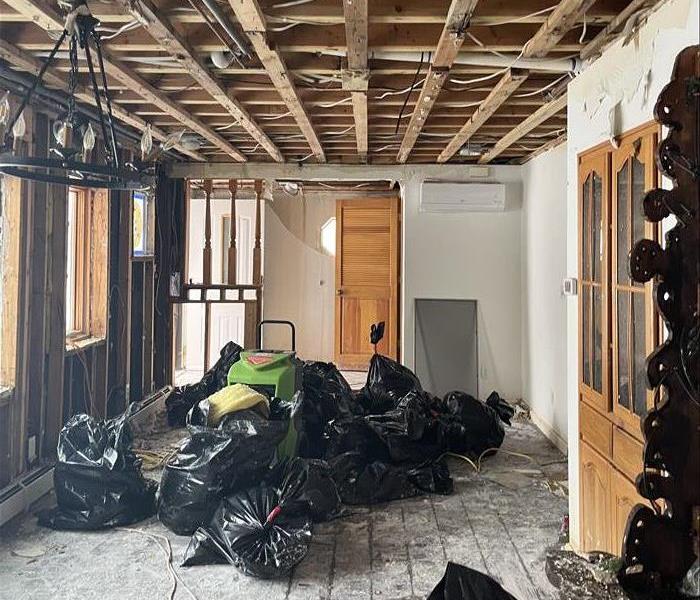 Investing in a fire sprinkler system is a proactive step towards protecting your home and loved ones.
Investing in a fire sprinkler system is a proactive step towards protecting your home and loved ones.
??At SERVPRO®, we understand the devastating impact a house fire can have on your life. That’s why we want to highlight one of the most effective ways to protect your home and loved ones: installing a fire sprinkler system. This essential safety feature offers numerous benefits, making it a worthwhile investment for any homeowner. Here are some compelling reasons why a fire sprinkler system is a must-have for your home.
Enhanced Fire Suppression
Fire sprinkler systems are designed to detect and respond to fires almost immediately. Unlike fire alarms, which only alert you to the presence of a fire, sprinklers take action by releasing water directly onto the flames. This rapid response can significantly reduce the spread of fire, minimizing damage to your property. The prompt suppression also gives you and your family more time to evacuate safely.
Property Damage Reduction
Water damage from a fire sprinkler system is often much less severe than the destruction caused by a fully-developed fire or even the high-pressure hoses used by firefighters. Sprinklers target the fire's source, using a controlled amount of water to extinguish flames, reducing overall property damage. This can save you thousands of dollars in repair and restoration costs.
Cost-Effective Investment
While installing a fire sprinkler system does involve an upfront cost, it can be a cost-effective investment in the long run. Many insurance companies offer discounts on homeowners' insurance premiums for properties equipped with fire sprinkler systems. These savings can offset the installation expenses over time. Additionally, the potential reduction in fire damage costs makes sprinklers a financially sound choice.
Increased Property Value
Homes equipped with fire sprinkler systems are often seen as more desirable by potential buyers. This added layer of safety can increase your home's market value and make it more attractive in a competitive real estate market. Prospective buyers are likely to appreciate the peace of mind that comes with a property equipped with modern fire safety features.
Peace of Mind
Knowing your home is equipped with a reliable fire sprinkler system provides unparalleled peace of mind. You can rest easy knowing that, in the event of a fire, your home is protected by a system designed to contain and suppress the flames quickly. This assurance allows you to focus on other important aspects of life without constant worry about potential fire hazards.
Easy Maintenance
Modern fire sprinkler systems are designed for ease of maintenance. Regular inspections and simple upkeep are typically all that’s required to keep the system in optimal working condition. This ensures long-term reliability without significant ongoing effort or expense.
Environmentally Friendly
Fire sprinkler systems can also be more environmentally friendly compared to traditional firefighting methods. They use less water to extinguish fires, reducing the overall environmental impact. This efficiency not only helps preserve water resources but also limits the damage to your home's structure and contents.
Investing in a fire sprinkler system is a proactive step towards protecting your home and loved ones. With benefits ranging from enhanced fire suppression to increased property value, sprinklers are a crucial addition to any residential property. At SERVPRO, we encourage homeowners to consider this invaluable safety measure. For more information on fire safety and restoration services, visit our website or contact us today. Let us help you ensure your home is as safe and secure as possible.
Bathroom Mold: Causes, Prevention, and Removal
7/17/2024 (Permalink)
Welcome to the SERVPRO® blog, where we tackle common household issues to keep your living spaces safe and comfortable. Today, we're diving into a topic that plagues many homeowners: bathroom mold. From its causes to effective prevention and removal techniques, let's explore how you can keep your bathroom mold-free.
Understanding the Causes
Mold thrives in environments with moisture, warmth, and organic matter, making bathrooms an ideal breeding ground. Common causes of bathroom mold include:
- Poor Ventilation: Inadequate ventilation traps moisture in the bathroom, creating a conducive environment for mold growth.
- Leaky Fixtures: Leaking pipes, faucets, or showerheads contribute to excess moisture, fostering mold growth behind walls and under flooring.
- High Humidity Levels: Humid environments, especially in poorly ventilated bathrooms, promote mold growth on surfaces like walls, ceilings, and grout lines.
- Lingering Moisture: Wet towels, bathmats, and shower curtains left in the bathroom provide additional moisture sources for mold.
Preventing Bathroom Mold
Prevention is key to avoiding the hassle and expense of dealing with bathroom mold. Here are some proactive measures you can take:
- Improve Ventilation: Install and use exhaust fans or open windows during and after showering to reduce humidity levels.
- Fix Leaks Promptly: Regularly inspect plumbing fixtures for leaks and repair them promptly to prevent moisture buildup.
- Use Mold-Resistant Products: Opt for mold-resistant paints, caulks, and grouts when remodeling or renovating your bathroom.
- Keep Surfaces Dry: Wipe down wet surfaces, such as shower walls, tubs, and sinks, after each use to prevent mold growth.
- Limit Moisture Sources: Store bath linens and personal care products in dry areas outside the bathroom to minimize moisture accumulation.
Effective Mold Removal Techniques
If you discover mold in your bathroom, it's essential to address it promptly to prevent further spread. Here are some tips for safe and effective mold removal:
- Protect Yourself: Wear protective gear, including gloves, goggles, and a mask, to avoid exposure to mold spores.
- Clean with Mold-Killing Products: Use commercial mold-killing cleaners or a mixture of water and detergent to scrub moldy surfaces thoroughly.
- Dry Thoroughly: After cleaning, ensure that the area is completely dry to minimize excess moisture and discourage mold regrowth.
- Dispose of Porous Materials: Items heavily infested with mold, such as shower curtains or grout, may need to be replaced to eliminate the mold completely.
- Seek Professional Help: For extensive mold infestations or if you're unsure about handling the situation yourself, contact a professional mold remediation service like SERVPRO for thorough and safe mold removal.
By understanding the causes of bathroom mold, implementing preventive measures, and knowing how to effectively remove mold, you can maintain a clean and healthy bathroom environment for you and your family. Stay tuned to the SERVPRO blog for more tips on home maintenance and restoration.
The Importance of Personal Protective Equipment During Water Damage Cleanup
6/12/2024 (Permalink)
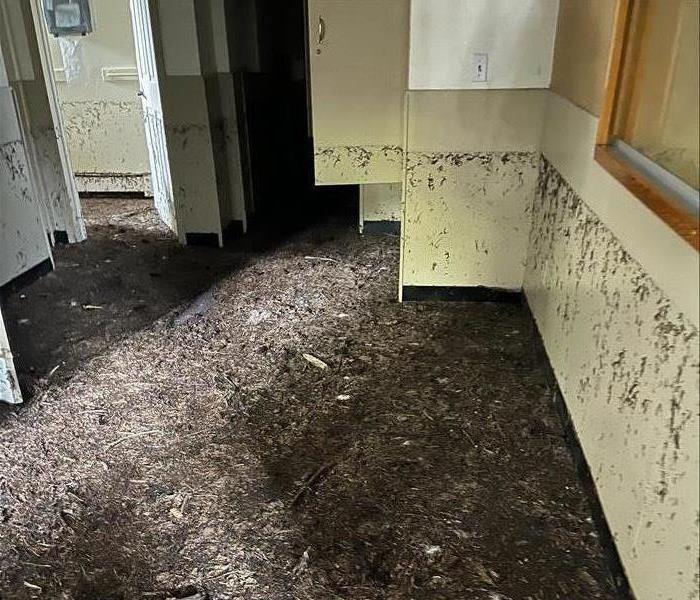 By wearing appropriate personal protective equipment, workers can minimize the risk of exposure to waterborne contaminants, bacteria, and mold spores.
By wearing appropriate personal protective equipment, workers can minimize the risk of exposure to waterborne contaminants, bacteria, and mold spores.
Water damage can occur suddenly and wreak havoc on homes and properties. Whether it's from a burst pipe, a leaky roof, or a natural disaster, the aftermath of water damage requires prompt and thorough cleanup. However, it's essential to prioritize safety during the restoration process, and that's where personal protective equipment (PPE) comes into play.
Understanding Personal Protective Equipment
Personal protective equipment, or PPE, refers to gear worn to minimize exposure to various hazards that may be present during water damage cleanup. This equipment serves to protect workers from potential health and safety risks, including exposure to contaminated water, mold, and other harmful substances.
Key Components of PPE
When it comes to water damage cleanup, several types of personal protective equipment are essential:
Protective Clothing: Waterproof coveralls or disposable suits can shield workers from exposure to contaminated water and debris.
Gloves: Rubber or nitrile gloves provide a barrier against water, chemicals, and other hazardous materials.
Eye Protection: Safety goggles or glasses protect the eyes from splashes, debris, and airborne contaminants.
Respiratory Protection: Depending on the extent of the damage and the presence of mold or other airborne particles, respirators or face masks may be necessary to prevent inhalation of harmful substances.
Footwear: Waterproof boots with slip-resistant soles offer protection against wet surfaces and potential hazards.
Minimizing Personal Risks
By wearing appropriate personal protective equipment, workers can minimize the risk of exposure to waterborne contaminants, bacteria, mold spores, and other harmful substances commonly found in water-damaged environments. This not only protects their health and safety but also reduces the likelihood of secondary issues.
Ensuring Compliance with Safety Standards
In addition to protecting workers, the use of personal protective equipment also helps ensure compliance with industry safety standards and regulations. Employers have a legal obligation to provide a safe working environment for their employees, and the proper use of PPE is an integral part of that responsibility.
Final Thoughts
When it comes to water damage cleanup, safety should always be a top priority. By wearing the appropriate personal protective equipment, workers can minimize health risks and ensure a safer and more effective restoration process. At SERVPRO®, we prioritize safety in all our cleanup and restoration efforts, providing our team members with the necessary training and equipment to protect themselves and our clients during every job.
If your home or property has experienced water damage, don't hesitate to contact SERVPRO of Northern Colorado Springs/Tri-Lakes for expert cleanup and restoration services. Our team is here to help you navigate the process safely and effectively, restoring your property to its preloss condition as quickly as possible.
5 Tips for Securing Your Garage During Storms
5/15/2024 (Permalink)
Storms can pose significant risks to your property, and one often overlooked area is the garage. Properly securing your garage can help protect your home and belongings from wind, rain, and debris during severe weather events. Here are several essential tips to help you secure your garage and minimize storm damage:
Reinforce Garage Doors
Start by inspecting your garage doors for any signs of damage or wear. Reinforce weak spots, such as panels or hinges, with braces or additional hardware to prevent them from bending or breaking under pressure. Consider installing a garage door reinforcement kit for added strength and stability.
Install Hurricane-Rated Garage Doors
If you live in an area prone to hurricanes or severe storms, consider investing in hurricane-rated garage doors. These doors are designed to withstand high winds and flying debris, providing an extra layer of protection for your home during extreme weather conditions.
Secure with Locks and Bolts
Make sure your garage doors are securely locked and bolted before a storm hits. Use deadbolt locks or slide bolts to reinforce the locking mechanism and prevent the doors from being forced open by strong winds or intruders. Consider adding a floor bolt or anchor to further secure the bottom of the door and prevent it from being lifted off the tracks.
Seal Gaps and Cracks
Seal any gaps or cracks around the edges of your garage doors to prevent water intrusion and wind-driven rain. Use weatherstripping or rubber seals to create a tight seal between the door and the frame, reducing the risk of water damage and moisture infiltration. Pay special attention to the bottom seal, as this is a common entry point for water during storms.
Invest in a Backup Power Source
Power outages are common during storms, which can leave your garage door opener inoperable. Invest in a backup power source, such as a generator or battery backup system, to ensure that your garage doors remain functional even if the power goes out. This will allow you to open and close the doors manually in case of an emergency.
By following these tips, you can help secure your garage and protect your home and belongings during storms. Don't wait until it's too late – take proactive steps to secure your garage today and enjoy peace of mind knowing that you're prepared for whatever Mother Nature throws your way.
Are Home Fire Sprinkler Systems Worth it? Benefits You Need to Know
4/17/2024 (Permalink)
While the idea of a fire sprinkler system might bring to mind commercial buildings or large facilities, the benefits of having one installed in your own home are often underestimated. In this blog, we're shedding light on why a home fire sprinkler system is more than just a safety feature—it's a smart investment for the well-being of your family and property.
Immediate Response
One of the primary advantages of a fire sprinkler system is its immediate response to a fire. These systems are designed to activate when they detect heat, responding swiftly to contain or even extinguish the flames before emergency services arrive. This rapid response significantly minimizes damage and enhances safety.
Localized Control
Contrary to popular belief, fire sprinkler systems are not triggered by smoke or burnt toast. They operate independently and only in the specific area where the heat is detected. This means that if a fire starts in the kitchen, only the sprinklers in that room will activate, preventing unnecessary water damage in other areas of your home.
Cost-Effective Protection
Investing in a home fire sprinkler system might seem like an upfront expense, but the long-term benefits far outweigh the costs. The immediate response and localized control not only save lives but also reduce property damage, potentially lowering insurance premiums over time.
Life-Saving Potential
The primary purpose of a fire sprinkler system is to save lives. Statistics show that the risk of dying in a home fire decreases by about 80% when sprinklers are present. The rapid response and ability to control or extinguish a fire can make a critical difference in emergencies.
Property Protection
Beyond saving lives, a home fire sprinkler system plays a pivotal role in protecting your property. Rapid fire suppression minimizes the chances of structural damage, reducing the extent of repairs needed after a fire. This not only saves money but also speeds up the recovery process.
Investing in a home fire sprinkler system is a practical and impactful decision for the safety of your family and the protection of your property. With immediate response, localized control, cost-effective benefits, life-saving potential, and property preservation, these systems offer comprehensive advantages that go beyond conventional fire safety measures. Take a moment to consider the lasting benefits of having a fire sprinkler system installed – an investment in peace of mind and the well-being of your home.
 Beyond the immediate destruction caused by flames, residual elements like soot, smoke, and debris can cause significant damage to your property.
Beyond the immediate destruction caused by flames, residual elements like soot, smoke, and debris can cause significant damage to your property.

 24/7 Emergency Service
24/7 Emergency Service
